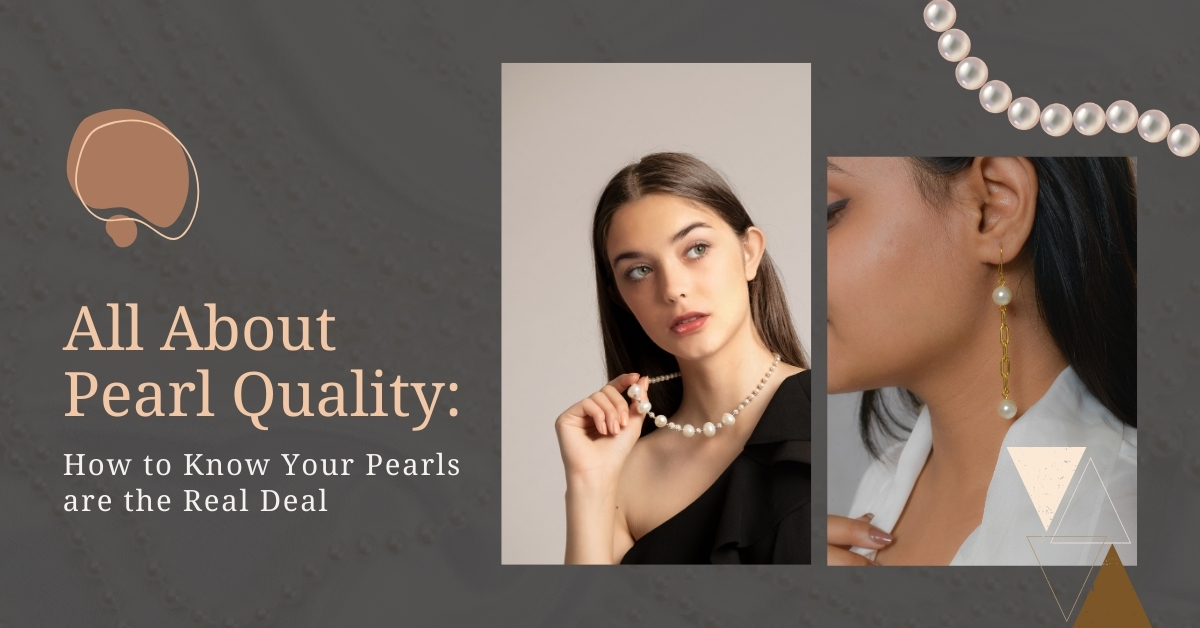
Often, we talk about diamonds and diamond quality, but little is known about pearl jewellery. Even though one can barely notice the difference between a low quality diamond and high quality one with a bare eye, shoppers still have the option to choose diamond quality while buying.
As for pearls, knowing quality is as important as knowing your diamonds. Pearls come in a variety of sizes, shapes, and colours, each expressing a story about its origin, quality, and rarity. Pearls, which were first written about in 2206 BC by a Chinese historian, are unrivalled in elegance and status in today’s world.
Explore the classic beauty of pearls, as well as an easy-to-follow care instruction.
Pearls are wrongly referred to as stones, although they are actually valuable jewels made of calcium carbonate.
Pearls are organic materials that are classified with coral, ivory/bone, and amber. Naturally, pearls develop around an irritant in the bodies of molluscs in both saltwater and freshwater environments.
This procedure happens spontaneously (natural pearls) or intentionally (cultured pearls) during a man-made bead implantation into a mollusc (GIA).
When belling pearl jewellery, it is important to distinguish between cultivated and natural pearls.
Tahitian pearls, Akoya, and freshwater black pearls are popular types, offering an attractive assortment of greens (peacock), purples (aubergine), greys, and inky dark natural or enhanced hues for individuals who want a glamorous style palette.
We are delighted to provide high-quality freshwater pearls, Tahitian pearls, and gold pearls for the discriminating consumer who likes pearls and their inherent beauty.
According to the GIA, pearls are evaluated based on several variables that ultimately define the quality of the pearl. The factors are as follows:
Lustre is the reflection of light from a surface. Pearls should have a high lustre and glossy finish. A dull surface reduces the overall brilliance of the pearl.
Surface Quality: Dents and scratches in the pearl’s surface give it a less-than-pristine appearance. Higher-quality pearls contain few or no flaws.
Nacre Thickness: A thick nacre increases the longevity and wearability of the pearl, allowing it to be enjoyed for many years. South Sea pearls have the thickest nacres, whereas Akoya pearls are often thinner.
Size: Pearls come in a wide range of sizes, from extremely little “mini” drill set in clusters to exceptionally big statement-worthy proportions.
The most common shape for pearls is round or spherical. They should be symmetrical from all sides. It is vital to notice that pearls occur in a variety of free-form forms (baroque), making each one a really unique jewel to own, with a fascinating formation and origin.
Colour: Pearls are associated with white, off-white, and other light cream tones. However, they also provide an intriguing spectrum of tantalising hues, either naturally or purposely coloured (deep purples, vivid pinks, delicious greens, and more) to obtain a richer tone.
*If there are several pearls (such as on a bracelet or pearl necklace strand), matching is taken into account. To create the most beautiful pearl strand, all pearls must be in a uniform row of the same colour and size/diameter.
Pearls have a Mohs hardness rating of 2.50-3 (out of 10), indicating that they are exceptionally soft. Treating your pearl jewellery with attention at all times can help it stay in good condition. Here’s how to take care of your pearls the right way.
Want to expand your jewellery collection with the shine of pearls? Discover our wide range of pearls at Stonex Jewellers. We have both original and faux pearls in both Silver, Gold and Stainless Steel. We have cultured pearls, devoid of cruelty and environmental exploitation.
Buy the perfect pearl jewellery from Stonex Jewellers and dress up for your favourite gala, date or gift it to someone you know!